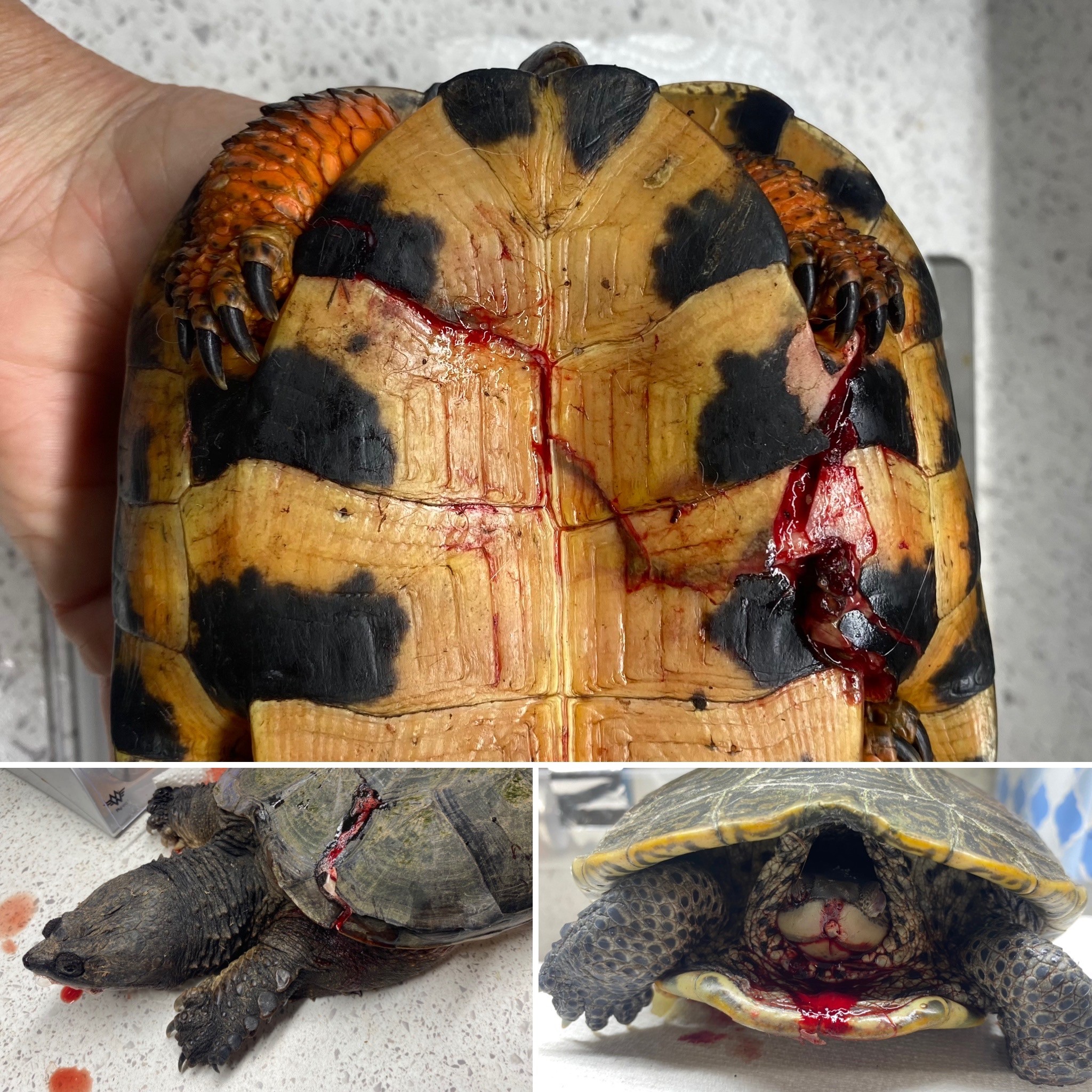2023 has been anything but a normal year for any of us, and turtles are clearly feeling the climate crisis, too. Hatchlings that overwintered in their nests, usually emerging in early spring, were being found well into May. The mass migration of egg-bearing turtles that always begins around Memorial Day, inundating our clinics for a few weeks as females are hit crossing roads to their nesting habitats, didn’t really kick in until late June. We assumed that the late start was due to the cool, drought-ridden spring. But it hasn’t let up yet. And males, which usually show up more in the fall as they’re out looking for mates and generally dispersing, are coming in now. Some of us have fewer chelonian patients than usual, some have far more. But one thing is certain: the slowdown that we look forward to in July is nowhere in sight.
Turtles are canaries in our coal mines. They observe a strict and predictable phenology that relies on climate consistency. Temperature, humidity, soil consistency and, yes, water levels, are critical factors in their lives. It may be hard to believe, but aquatic animals are just as devastated by flooding as we are. A caller during yesterday’s storm had found not one, but three painted turtles crossing the road at the same spot. He managed to save one. When asked if their pond was flooded by all the rain, he said that the outflow, normally a trickle, had become a raging torrent.
When you listen to news stories about the number of deaths caused by heat, flooding, fire or other climate catastrophes, think about the lives the media never covers. How great is that statistic, and who is paying attention? Turtles have walked the treadmill of climatic change on earth for over 200 million years, and adapted and survived. But we have cranked up the speed, and they are in no way equipped to adapt to this pace of change. Neither are we.
Please do whatever you can to fight the climate crisis. All lives depend on it.


